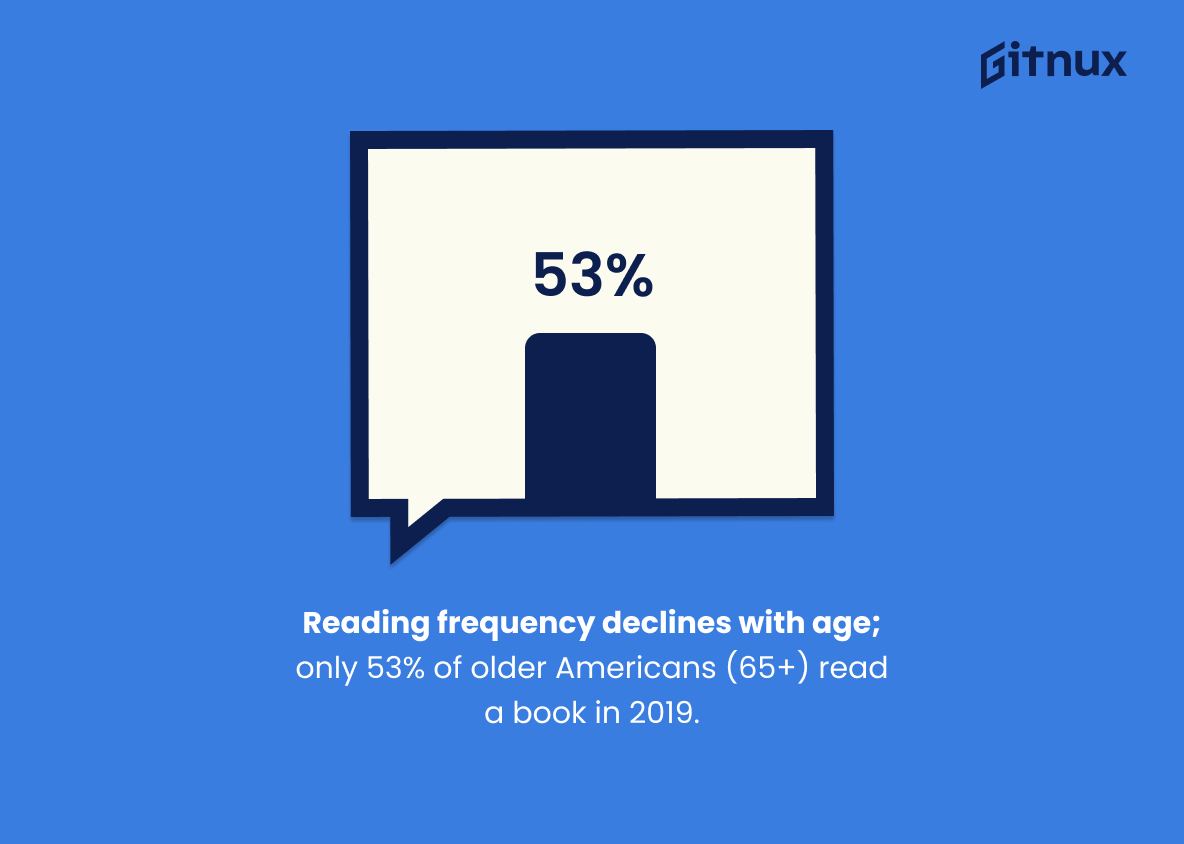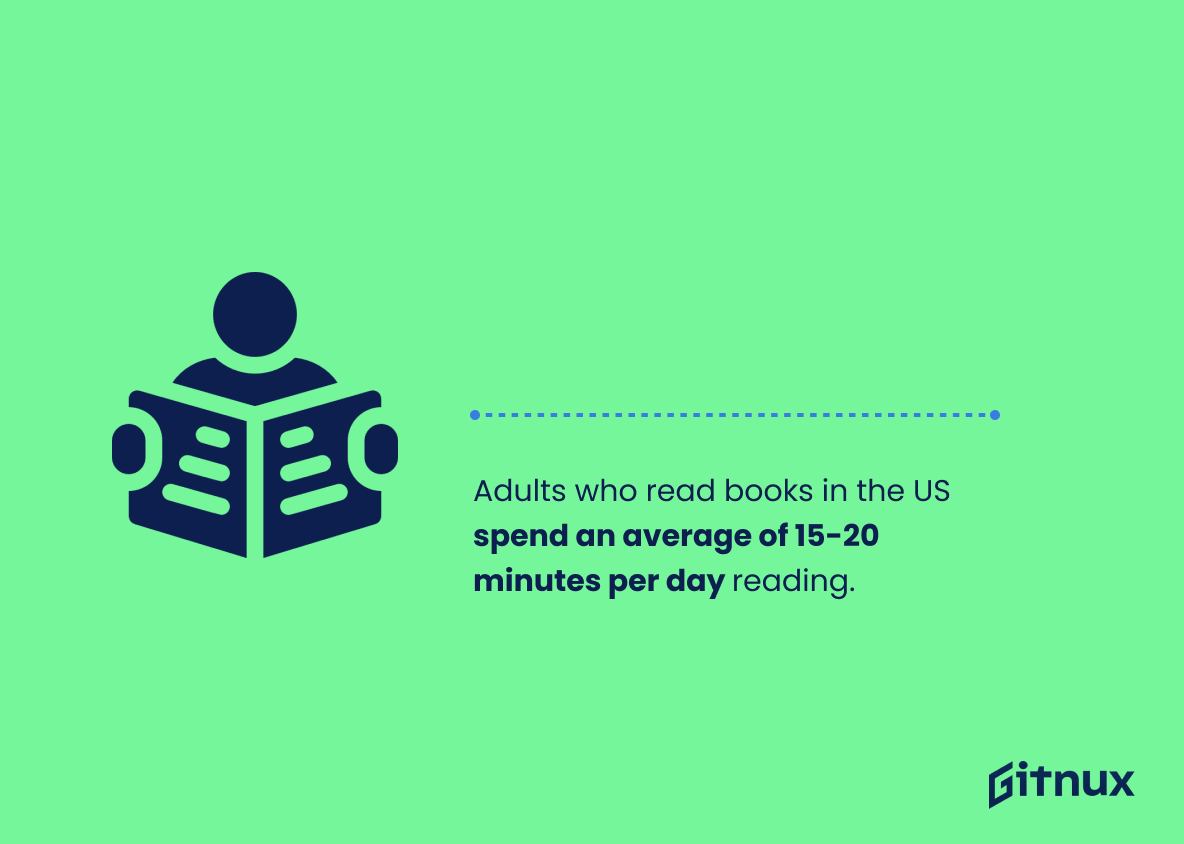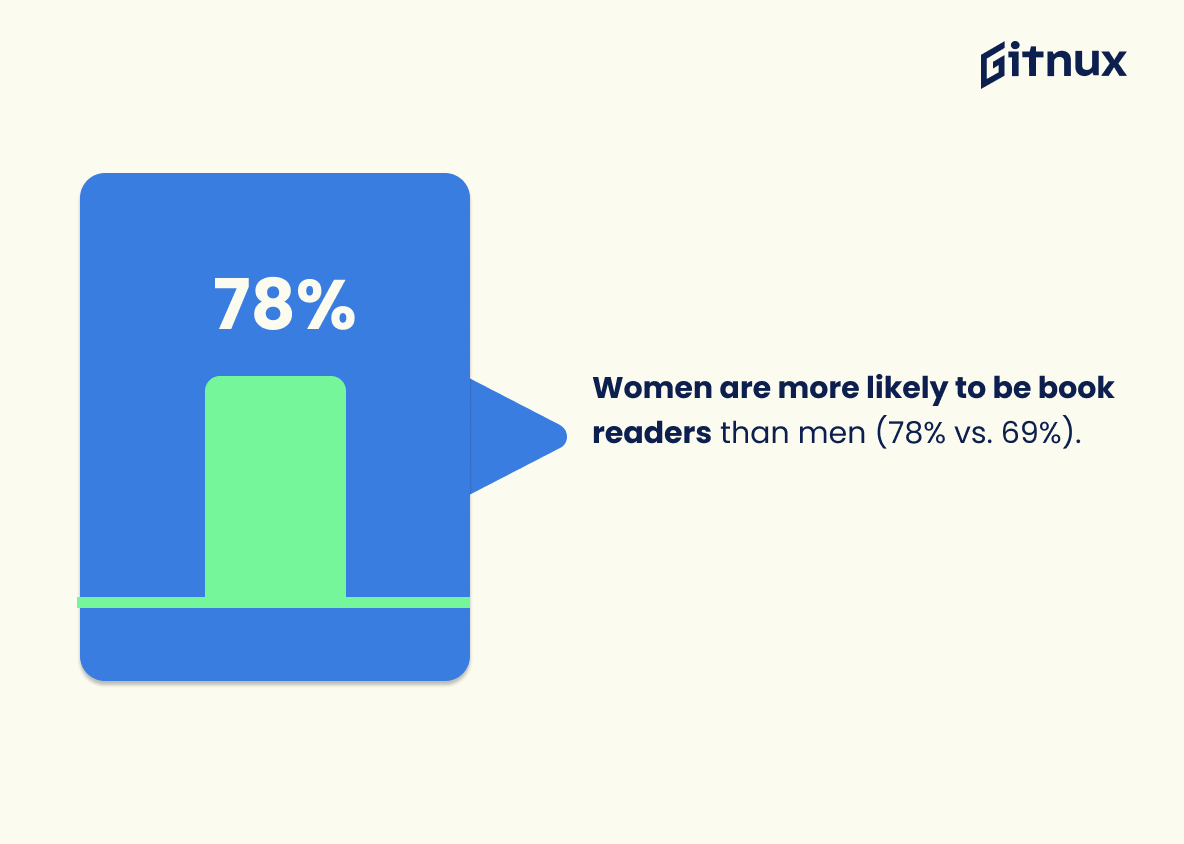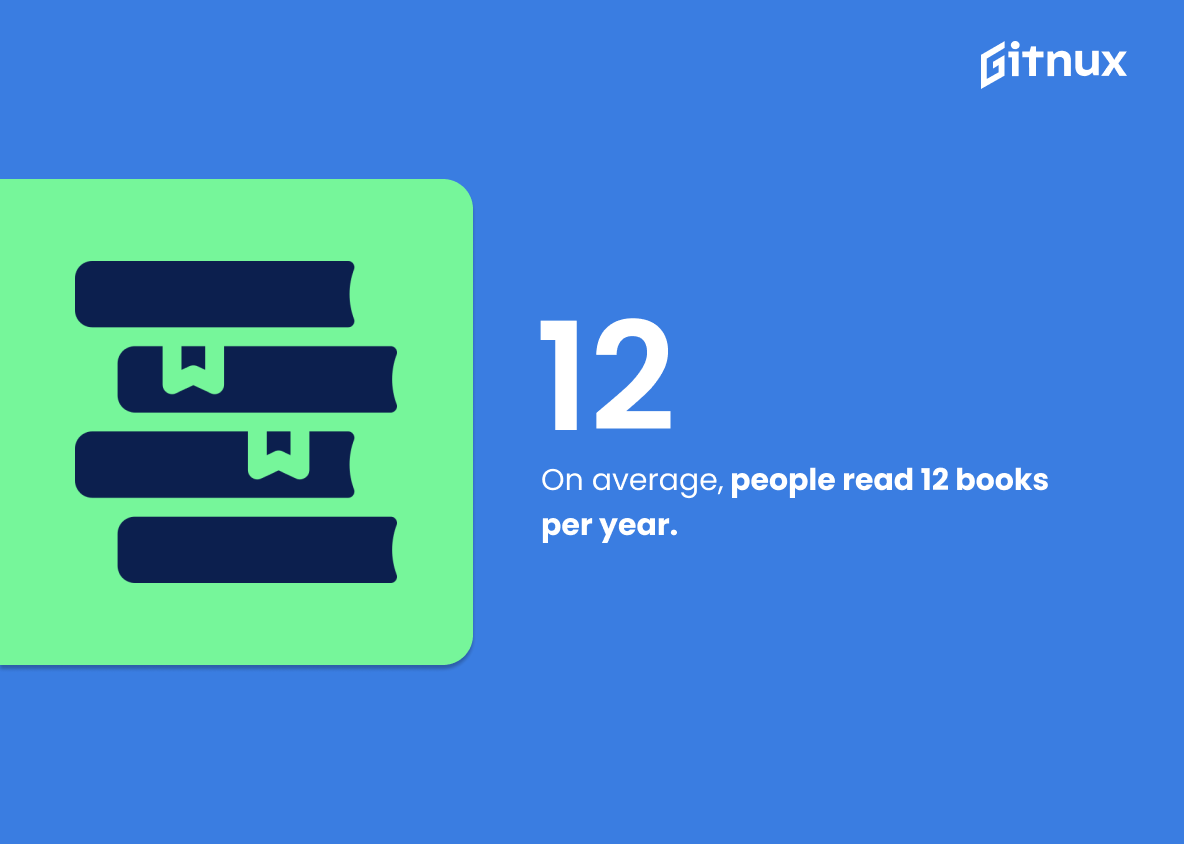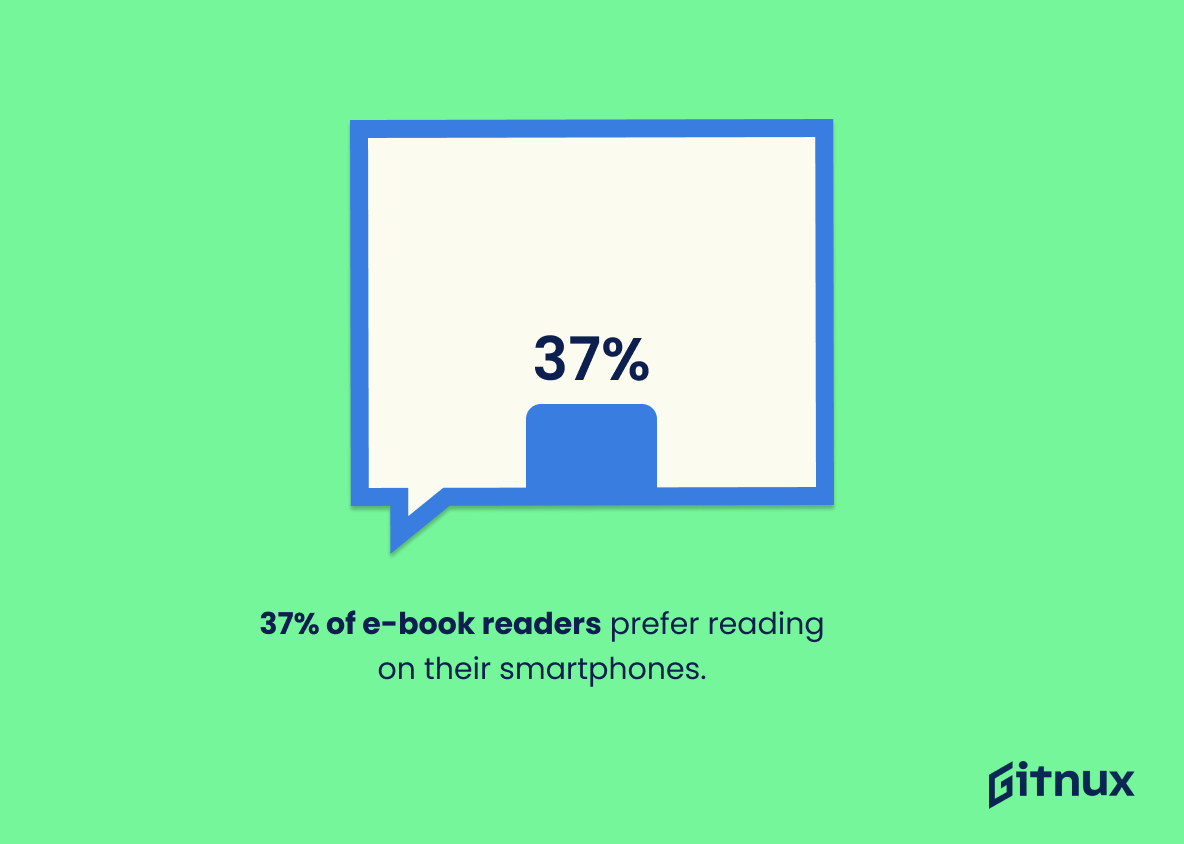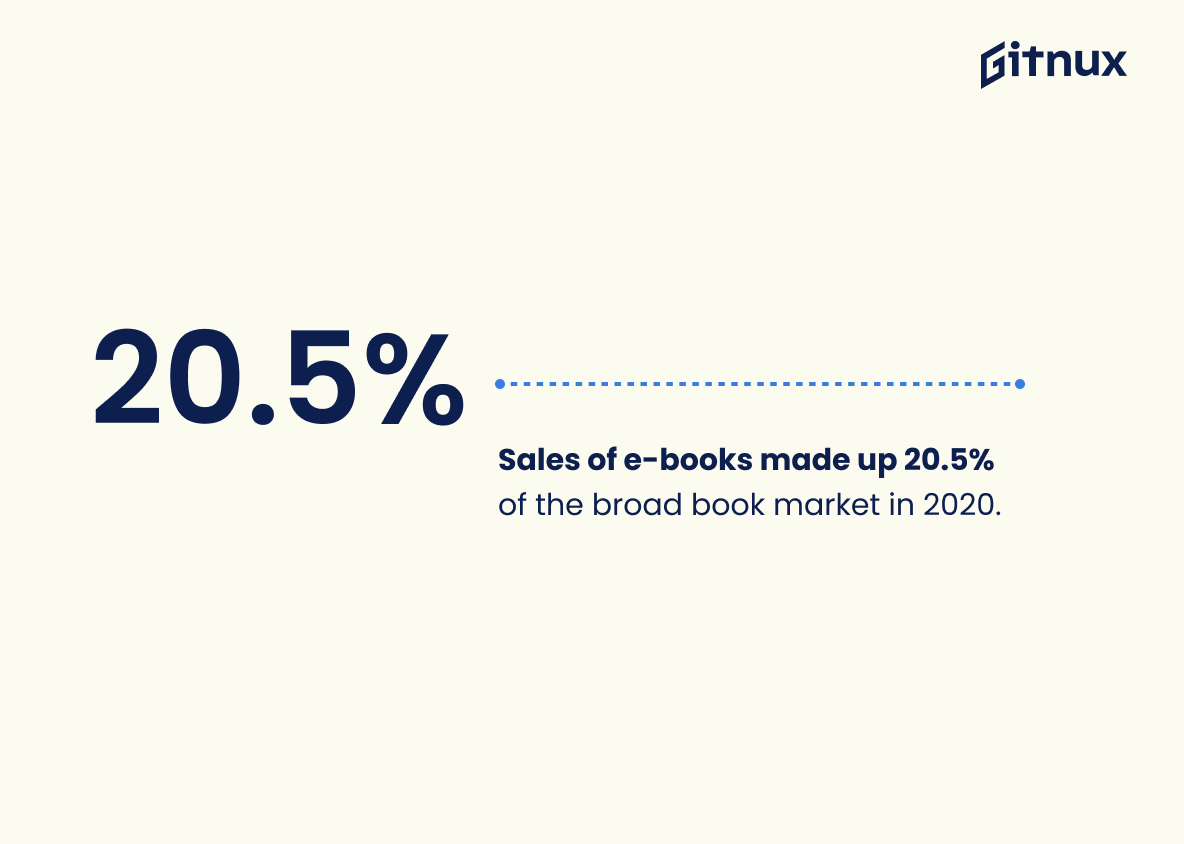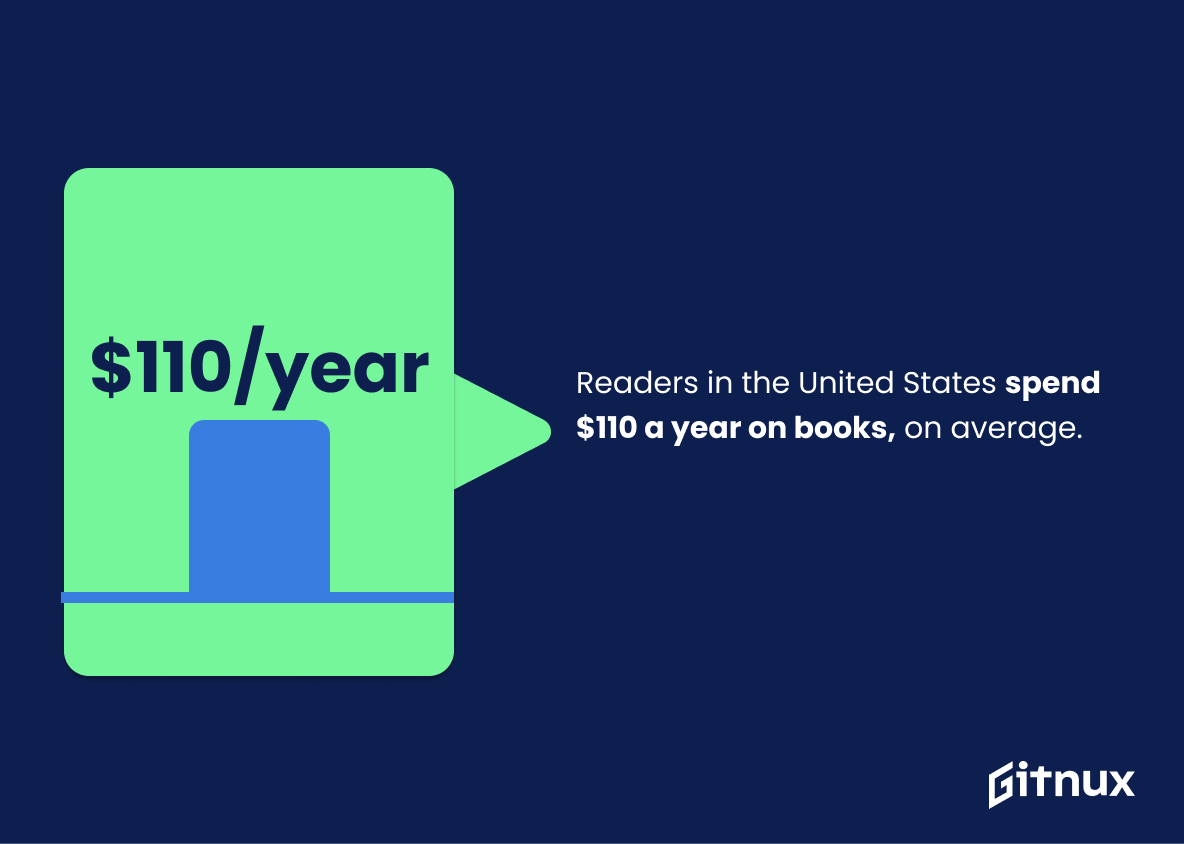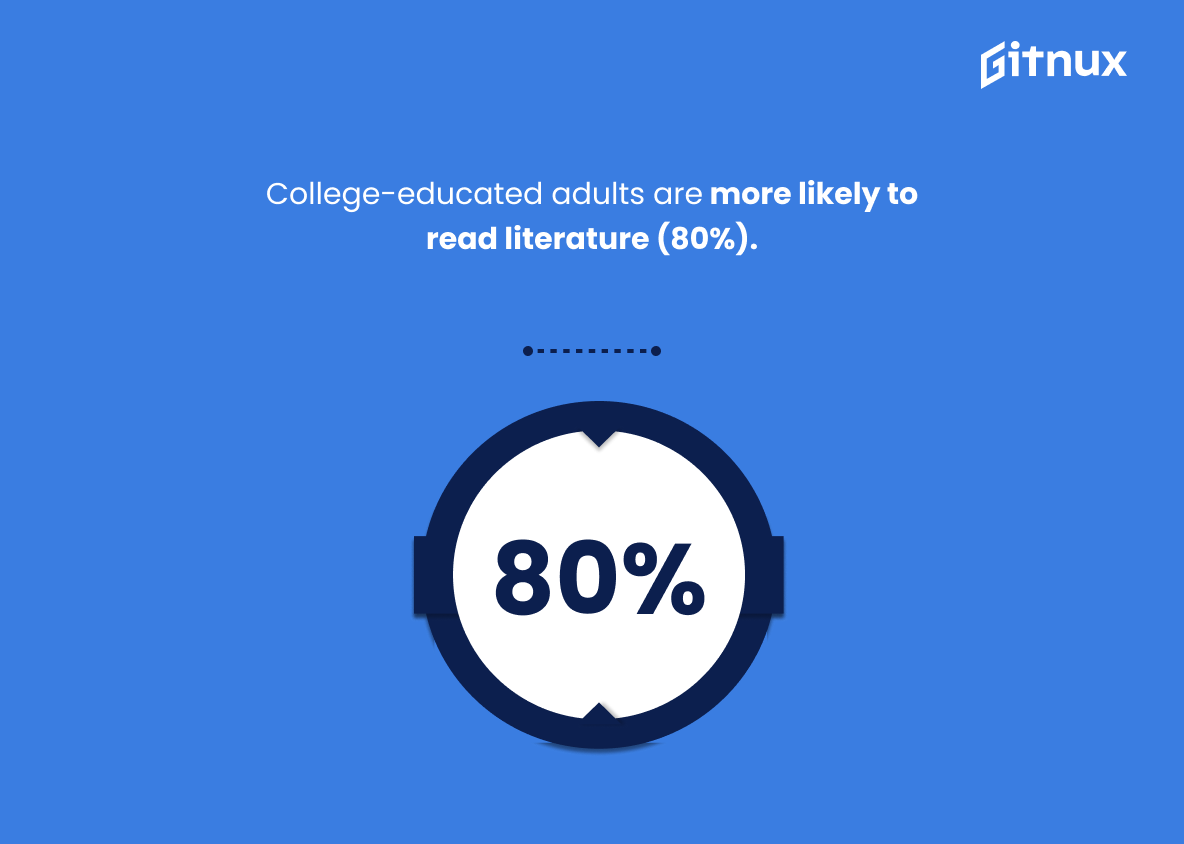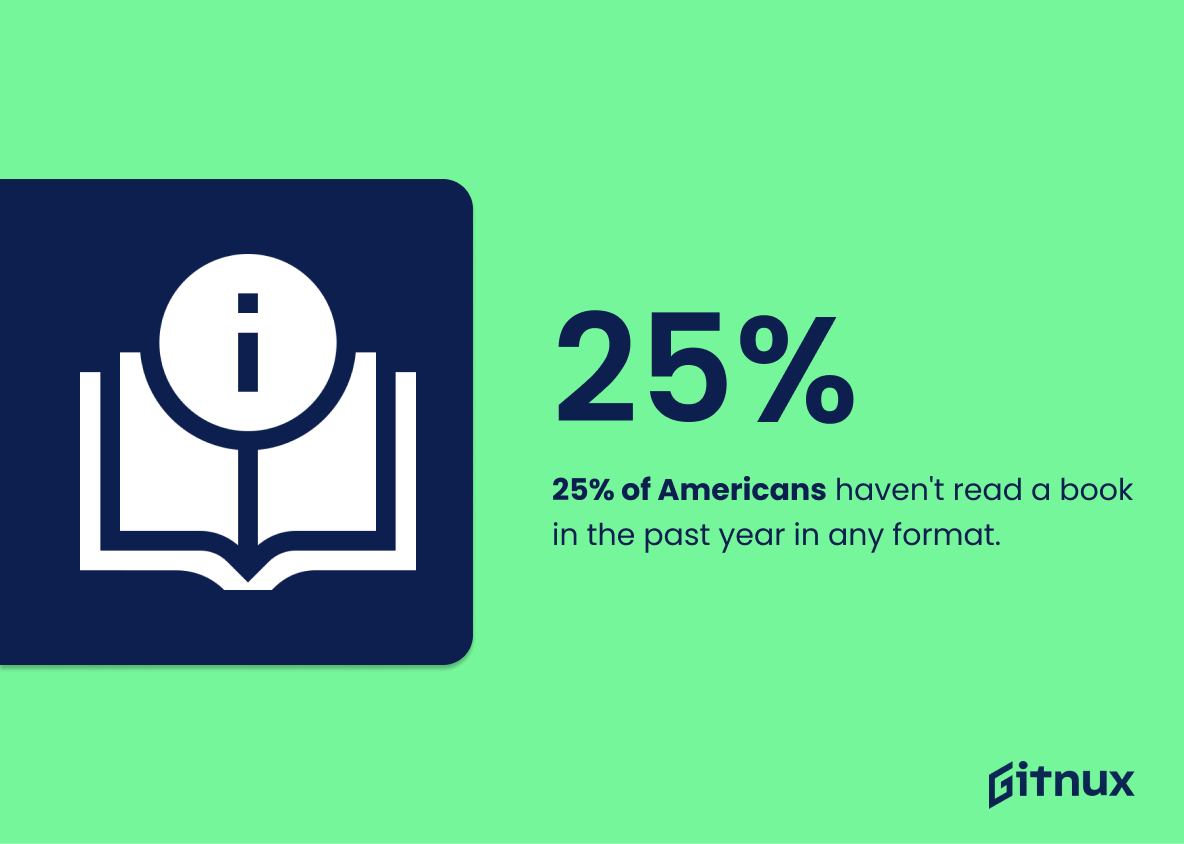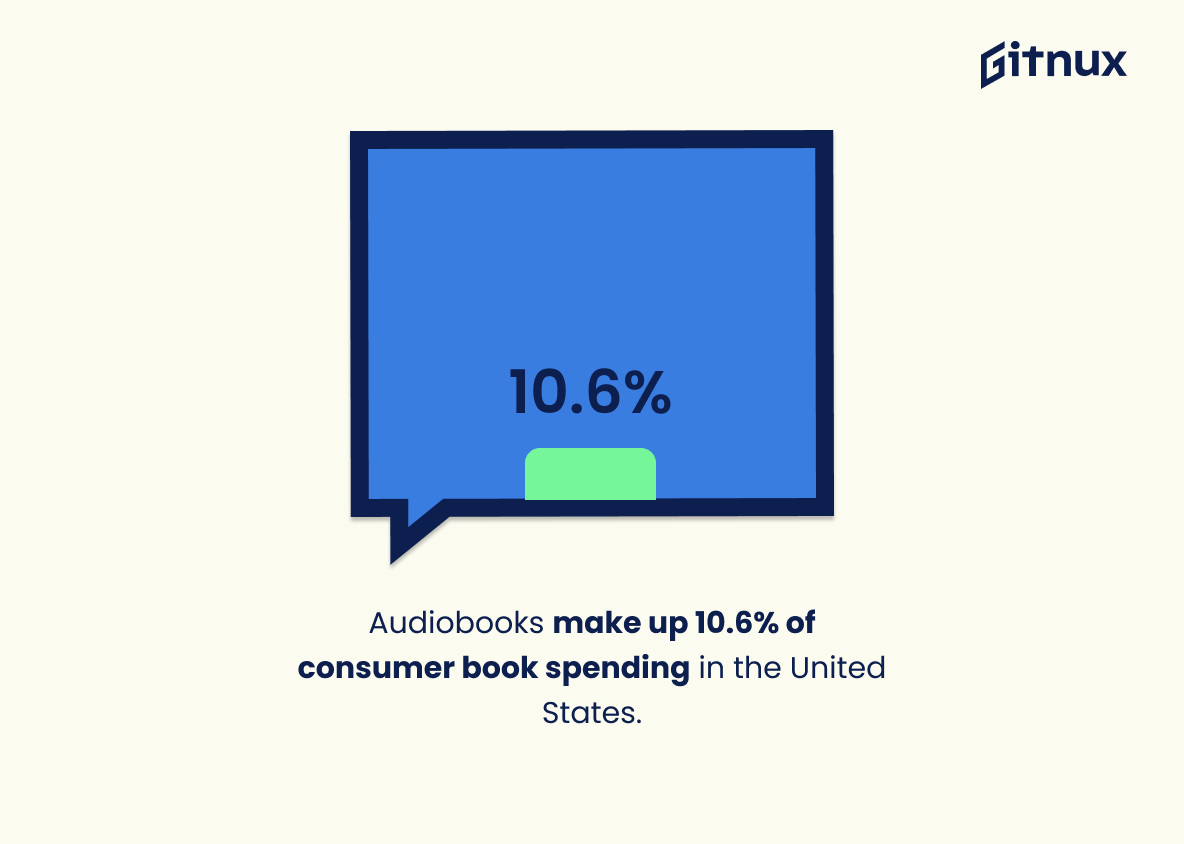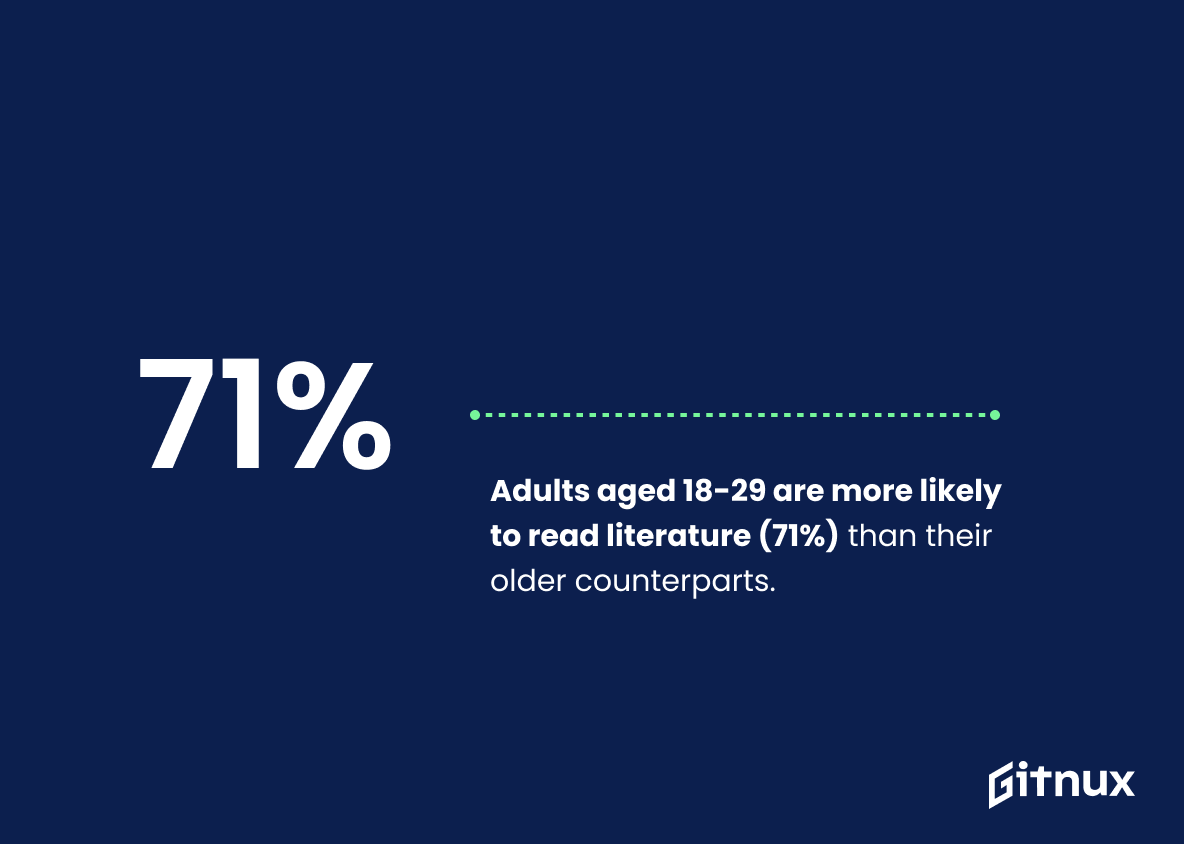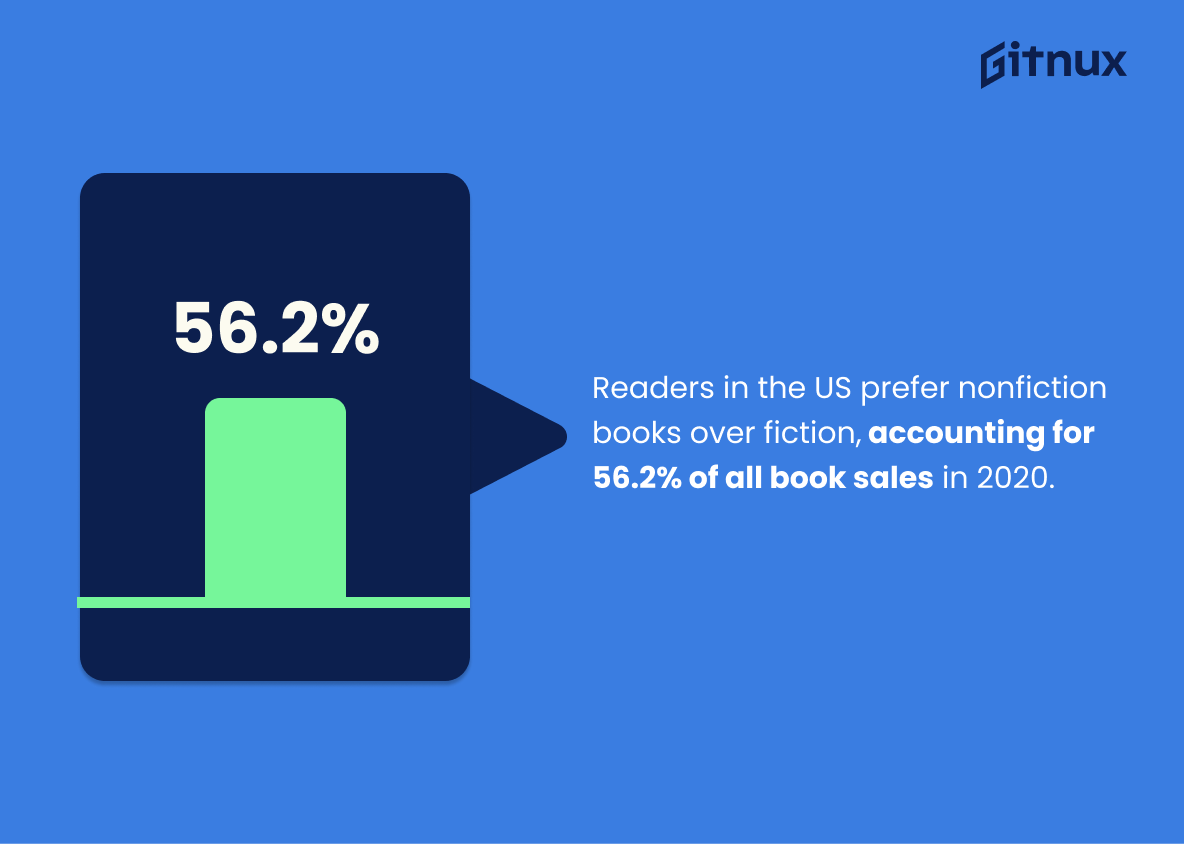Reading books is an activity that many people enjoy, and the statistics show just how popular it really is. According to a 2019 Pew Research Center survey, 72% of American adults have read at least one book in the past year. Additionally, 35% of children aged 6-17 stated that they read for fun daily according to Scholastic’s Reading Summit report from 2018. Furthermore, 50% of all readers in the United States prefer printed books over digital formats such as ebooks or audiobooks according to Statista data from 2020.
These are only some examples among many other interesting facts about reading habits across America today; there are plenty more where these came from. In this blog post we will explore various statistics related to reading books in the US including who reads them most often and what types of media they prefer when doing so. We’ll also look into spending trends on books and discuss why reading remains important even with changing technology preferences over time. So let’s dive right into it.
This statistic is a testament to the power of reading books, as it shows that the majority of American adults are engaging in this activity. It is an important statistic to consider when discussing the impact of reading books, as it demonstrates that it is still a popular activity among adults. Furthermore, this statistic can be used to highlight the importance of reading books and the potential benefits it can have on individuals.
50% of all readers in the United States prefer printed books.
This statistic is significant in the context of a blog post about Reading Books Statistics as it provides insight into the preferences of readers in the United States. It indicates that printed books are still a popular choice among readers, despite the rise of digital media. This statistic can be used to inform decisions about book publishing, marketing, and distribution.
Reading Books Statistics Overview
42% of college students will never read another book after they graduate.
This statistic is a stark reminder of the importance of reading books, even after college. It highlights the fact that many college students are not continuing to read books after they graduate, which could have a negative impact on their intellectual growth and development. This statistic is a call to action for college students to make reading books a part of their post-graduation lives.
Reading frequency declines with age; only 53% of older Americans (65+) read a book in 2019.
This statistic is a stark reminder of the importance of reading for older Americans. It highlights the need for more initiatives to encourage reading among the elderly, as well as the need for more resources to be made available to them. It also serves as a reminder of the importance of reading for all ages, as it can help to keep the mind sharp and active, and can provide a much-needed escape from the stresses of everyday life.
Adults who read books in the US spend an average of 15-20 minutes per day reading.
This statistic is a powerful reminder of the importance of reading books. It shows that even with the busy lives we lead, we can still make time to read and benefit from the knowledge and enjoyment that comes with it. It also highlights the potential for reading to become a regular part of our daily routine, and the positive impact it can have on our lives.
Women are more likely to be book readers than men (78% vs. 69%).
This statistic is significant in the context of Reading Books Statistics because it highlights the importance of encouraging reading among both genders. It shows that women are more likely to engage in reading books than men, which could be due to a variety of factors such as access to books, cultural norms, or even personal preference. This statistic is a reminder that reading should be encouraged and supported among both genders in order to ensure that everyone has the opportunity to benefit from the knowledge and enjoyment that comes with reading books.
65% of US households have at least one person who loves to read.
This statistic is a powerful indicator of the importance of reading in the United States. It shows that the majority of households have at least one person who loves to read, which speaks to the value that Americans place on reading and the impact it has on their lives. This statistic is especially relevant to a blog post about Reading Books Statistics, as it provides a snapshot of the current state of reading in the US.
On average, people read 12 books per year.
This statistic is a powerful indicator of the importance of reading books in our lives. It shows that, on average, people are taking the time to read and engage with literature, which can have a positive impact on their lives. This statistic is especially relevant to a blog post about Reading Books Statistics, as it provides a tangible example of the impact that reading can have on people’s lives.
37% of e-book readers prefer reading on their smartphones.
This statistic is significant in the context of a blog post about Reading Books Statistics because it demonstrates the growing trend of people turning to their smartphones to read e-books. It highlights the convenience of having access to books on the go, and the potential for e-book readers to reach a wider audience.
Sales of e-books made up 20.5% of the broad book market in 2020.
This statistic is a telling indication of the changing landscape of the book market. It shows that e-books are becoming increasingly popular, and that readers are increasingly turning to digital formats for their reading material. This is an important trend to note, as it has implications for the future of the publishing industry and the way readers access books.
Readers in the United States spend $110 a year on books, on average.
This statistic is a powerful indicator of the importance of reading books in the United States. It shows that readers are willing to invest in books, which suggests that books are a valued part of their lives. This statistic is also important in understanding the economic impact of books in the US, as it shows that readers are spending money on books, which helps to support the publishing industry.
College-educated adults are more likely to read literature (80%).
This statistic is a powerful reminder of the importance of reading literature. It highlights the fact that college-educated adults are more likely to engage in this activity, which can have a positive impact on their lives. Reading literature can help to expand one’s knowledge, improve communication skills, and even increase empathy. By emphasizing this statistic, the blog post can help to encourage more people to pick up a book and start reading.
25% of Americans say that they have not read a book in the past year, either in print, electronic, or audio format.
This statistic is a stark reminder of the importance of reading books. It highlights the fact that a large portion of Americans are missing out on the many benefits that come with reading, such as improved literacy, increased knowledge, and enhanced creativity. It also serves as a call to action for those who have not read a book in the past year to make reading a priority in their lives.
Audiobooks make up 10.6% of consumer book spending in the United States.
This statistic is a telling indication of the growing popularity of audiobooks in the United States. It shows that audiobooks are becoming an increasingly important part of the book market, and that readers are increasingly turning to audiobooks as a way to enjoy their favorite books. This is an important trend to note, as it could have implications for the future of the book industry.
Adults aged 18-29 are more likely to read literature (71%) than their older counterparts.
This statistic is significant in the context of Reading Books Statistics because it highlights the importance of literature for younger generations. It suggests that adults aged 18-29 are more likely to engage with literature than their older counterparts, which could be indicative of a shift in reading habits and preferences. This could be an indication of the changing landscape of literature and the potential for new and exciting stories to be told.
Readers in the US prefer nonfiction books over fiction, accounting for 56.2% of all book sales in 2020.
This statistic is a telling indication of the reading habits of Americans, demonstrating that nonfiction books are the preferred choice for many readers. This information is pertinent to a blog post about Reading Books Statistics, as it provides insight into the types of books that are most popular among readers in the US.
Conclusion
From these statistics, it is clear that reading books remains a popular activity in the United States. Despite the rise of digital media and e-books, printed books remain preferred by 50% of readers. Women are more likely to be book readers than men (78% vs 69%), while college-educated adults are more likely to read literature (80%).
Additionally, 82% of parents with children aged six or younger say they started reading aloud before age one. Overall, Americans spend an average of 15-20 minutes per day on reading and $110 annually on books – both print and electronic formats included.
References
0. – https://www.www.aap.org
1. – https://www.www.pewresearch.org
2. – https://www.www.arts.gov
3. – https://www.www.npr.org
4. – https://www.www.statista.com
5. – https://www.www.dlapiper.com
6. – https://www.www.jenkinsgroupinc.com
7. – https://www.www.pewinternet.org
8. – https://www.techcrunch.com

